Pamela Gay is the recipient of a New York Foundation for the Arts (NYFA) award in creative nonfiction and an Independent e-Book Award for her memoir Homecoming, which combines text, image and sound. An installation sponsored by the New York State Council on the Arts (NYSCA) included artifacts. Her new book is I’m So Glad You’re Here: A Memoir. Gay’s writing has been published in Brevity, Iowa Review, Midway Journal, Paterson Literary Review, Monkeybicycle, Grey Sparrow, Vestal Review, and other literary journals, as well as in two anthologies. She is professor emerita at Binghamton University, State University of New York, where she taught courses in flash memoir and flash fiction. Learn more about I’m So Glad You’re Here: A Memoir.
—∞—
When Ernest Hemingway’s “A Very Short Story” was published in 1924, it was called a vignette. Today it would be called flash fiction. Flash writing, whether fiction or creative non-fiction, an umbrella term that includes memoir, hovers around 500-1,000 words. Like all good stories, success depends on depth, not length. Jerome Stern limited “shorts” to 250 words, the best of which he published in a little book called micro-fictions. In their introduction to Flash Fiction Forward: 80 Very Short Stories, James Thomas and Robert Shapard write, “A very, very short story (1-3 pages) should be read like a poem. That is, slowly.” “A good flash,” writes the editor of the Vestal Review, “is perhaps the hardest type of fiction to write. A good flash is so condensed that it borderlines poetry.”
Very short stories are enjoying a wave of popularity. There are so many talented writers of flash prose, both fiction and memoir, some of which border on poetry. Interested in reading more? Here’s a selection of authors who excel in their use of this short form.

Minor Robberies by Deb Olin Unfert
In “Minor Robberies,” featured in One Hundred and One Stories in a Small Box, Deb Olin Unferth captures the way we tell stories to each other—full of repetition, uncertainty, and half-remembered incidents. In 143 pages, Unferth unleashes a horde of off-kilter characters and indelible misadventures.
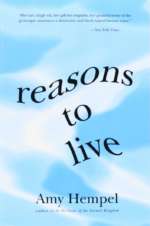
Reasons to Live by Amy Hempel
Amy Hempel’s minimalist stories reveal how rich sparseness can be. Listen to what she has to say in an interview with Ruth Franklin: “I love writing these incredibly condensed pieces that just have one swift kick in them.” You can find her highly praised semi-autobiographical story “In the Cemetery Where Al Jolson Is Buried” in a collection called Reasons to Live.
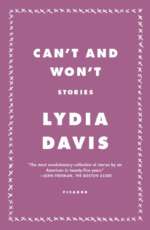
Can’t and Won’t by Lydia Davis
Lydia Davis is noted for her idiosyncratic and extremely short stories characterized by vivid observations of mundane and routine occurrences. Many are a single sentence or paragraph long. In 2009 her books, from the groundbreaking Break It Down to the 2007 National Book Award nominee Varieties of Disturbance, were collected in one volume. Her new book Can’t and Won’t is a fantastic collection of vignettes, short stories, and really long stories. The longest is 28 pages; the shortest is only 9 words.
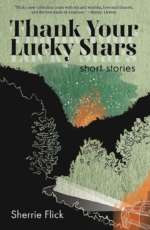
Thank You Lucky Stars by Sherrie Flick
Thank Your Lucky Stars by Sherrie Flick reads like poetry. “Crickets” is one page of rich images that leap like the story’s namesake from one idea to another. Her flash fiction appears in many anthologies including Norton’s Flash Fiction Forward and New Sudden Fiction. She is also the author of the flash fiction chapbook I Call This Flirting.
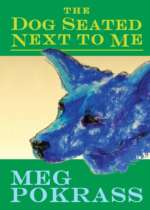
The Dog Seated Next to Me by Meg Pokrass
Meg Pokrass has written six flash fiction collections, an award-winning collection of prose poetry, and a novella-in-flash. About The Dog Seated Next to Me, a reviewer praised “her ability to create fully realized complex characters in the tradition of literary realism typically associated with longer narratives, even novels.”

The Two Kinds of Decay: A Memoir by Sarah Manguso
Sarah Manguso has been called a “Proustian minimalist on the order of Lydia Davis.” Check out her varieties of flash memoir: The Two Kinds of Decay: A Memoir; Ongoingness: The End of a Diary; and The Guardians: An Elegy for a Friend.

Ecstatic Cahoots by Stuart Dybek
Stories by Stuart Dybek in Ecstatic Cahoots range from micro-fiction to flash fiction and includes some short stories. The first story is two sentences. Whatever the length, Dybek re-envisions the possibilities of fiction, creating myriad human situations that fold endlessly upon one another and are often poetic. Dybek is a poet too.
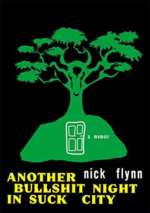
Another Bullshit Night in Suck City by Nick Flynn
A memoir by playwright and poet Nick Flynn describes his reunion with his estranged father, an alcoholic resident of the homeless shelter where Nick was a social worker in the late 1980s. The title Another Bullshit Night in Suck City refers to his father’s description of homeless life in Boston. This noir family history is told in small “ladlings” over 288 pages. “Ladlings,” a word chosen by Kirkus Reviews, is perfectly put. Readers are fed spoonful by spoonful. Flynn uses the “flash” form, many of which are poetic.




